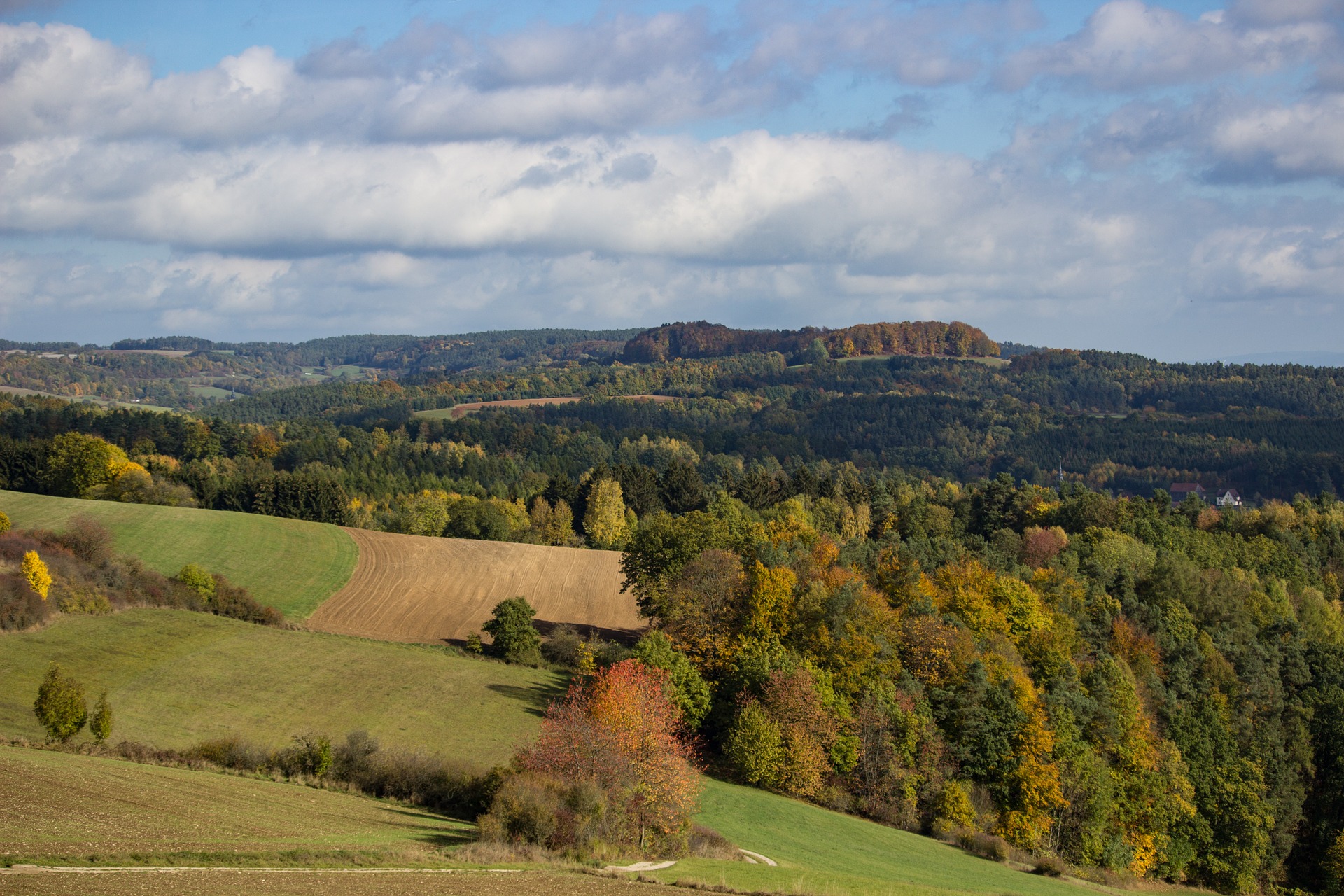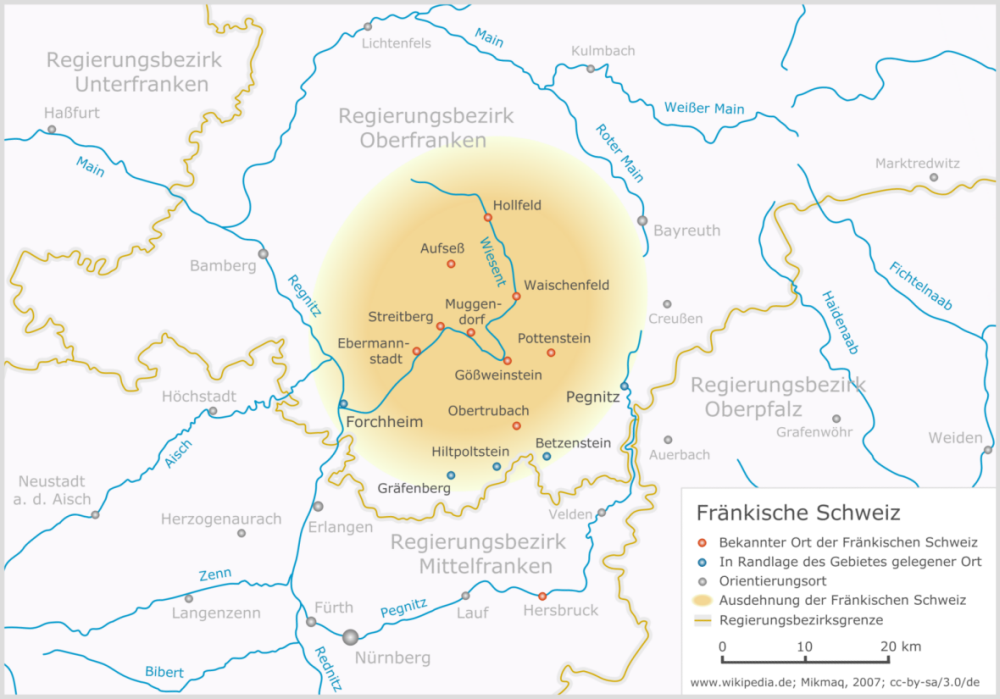Discrete and continuous objects in GI systems
Objects and space
How do we most easily and efficiently implement the abstraction of our worldview in geography? In principle, the geographical representation of space can be carried out using two different concepts: On the one hand, unique objects can be identified, so-called discrete geo-objects. Opposed to this is the concept of continuous spaces or fields. In principle, discrete (geo) objects are anything that can be delimited and counted in any way. So, for example Cars, houses, pedestrians, flowers, bears, football fields and so on. Fields, on the other hand, describe continuous, spatially and temporally changing attribute values or characteristic values of spaces.
Modelling a region
Let’s start with a geographical notion of space familiar to us from everyday knowledge. So many know the region of Franconian Switzerland.

We associate with such spaces a more or less diffuse yet distinct spatial extension (region) or the idea of a landscape. A very catchy example of such spatial transitions is e.g. Earth surface shape, because the Earth’s surface has a (quasi-)continuously different height. The spatial distribution of these characteristics varies more ore less continuously as shown py the picture. Spaces perceived as entities often have attributes such as culinary, cultural or recreational aspects. Franconian Switzerland is known for its wines and local beers, but also for its Easter wells or its touristic potential.

If one tries against this background a spatial separation of the Franconian Switzerland not only the religious or culinary preferences of the population, but also e.g. the morphological or edaphic properties of the earth’s surface they inhabit are inhomogeneous in space distribution. The map of the Franconian Switzerland tries to symbolize this by a radial fading of the colors in the edge area, but without clarifying how this demarcation

Spatial Abstraction for beginners
Discrete objects are characterized by a clear spatial delineation, while spatially continuous forms initially have no clearly object-related spatial delimitation. Of course this rule depends on the scale of observation or interest. In addition, the binary logic of computer-compatible data processing makes a limitation of the information necessary. In the practice of geographic information systems, therefore, even continuous fields such as spatially delineated objects are treated, ie divided into discrete units of space, taking into account a scale suitable for the question. The essential difference to the concept of discrete objects in empty space is that they exist in a known position in an otherwise empty space, while in discrete objects decomposed continua map and describe this space without gaps and their properties without gaps.
Further Reading
- The core of GIScience pages 22-33 Tolpekin & Stein 2012